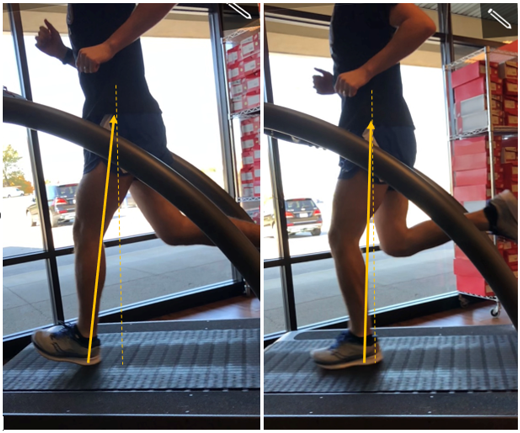Cadence: A Guide for Runners
Fit For Life Physical Therapy
Are you following Marathoner In Training’s well-designed training schedule that slowly increases mileage? Are you doing regular strengthening and stretching, such as the Fit For Life Physical Therapy Runners & Walkers 10? Are you still having pain with running and walking? Cadence is an often-overlooked aspect of training that can contribute to your pain. Cadence is defined as your rate of steps per minute. This article will describe why this matters, give you a recommended cadence range, and explain how to incorporate this into your program.
A common running gait impairment is over-striding. This means landing with your foot too far in front of your body, and this is can commonly result in a slow cadence. This creates a braking force that slows you down and increases the impact forces absorbed by your legs. This can also magnify any other issues you may have with your running form and can ultimately lead to pain with running. Can you tell the difference between these two pictures?

Notice that the runner in the first picture is landing with their foot in front of their body, creating an increased braking force that is slowing them down and causing their legs to work harder. In the second picture the runner’s foot lands directly under their center of mass, reducing this braking force.
A slower cadence will also magnify other issues you may be having with your running form. If you know your hip drops or your knees or feet cave inwards, these issues are made worse with a slow cadence. This is because you spend more time on the ground, giving you more time for your hip to drop and more time for your knee or foot to roll inwards.
So how do you measure your cadence and how do you make a change? Many GPS or smart watches will track cadence and you can either view this during or after your run. A good range to shoot for is 160 - 180 steps/min. However, if you have a significantly slower cadence, try increasing your cadence by 5-10 steps/min and see how it feels. A 10% increase in your cadence across the MIT season is a reasonable target.
This begs the question; how do you go about increasing your cadence? Some watches, including Garmin and Apple watches have the capability of showing your cadence right on the watch face while you are running. Another method is to use a free metronome app on your phone. Simply select a tempo (or cadence) and match your steps to this for the first few minutes of your run…now aim for your target range.
Now you know what cadence is, why it matters, a good number to shoot for, and how to make this happen. Now go try it!
Summary:
- Cadence = steps per minute
- A slow cadence will often result in your foot landing further in front of your body, increase braking forces
- A slow cadence can exaggerate any issues with your running form
- A good cadence is 160 - 180 steps per min (start by increasing 5-10 steps per minute faster than your current cadence, with 10% increase during a season as a target range)
- Use your watch or a metronome app to increase your cadence
If you have tried increasing your cadence and are still having pain with walking or running Fit For Life Physical Therapy is here to help! Our physical therapists can evaluate your running form, determine if you have muscle imbalances (weak or tight muscles), work with Fleet Feet to give you footwear recommendations, and provide you an individualized exercise program to improve your training and keep you pain free.
If you need more advice regarding your cadence, please call or text us at Fit For Life Physical Therapy, 614-981-1979.
Connect With Us
See the latest from Fleet Feet Columbus